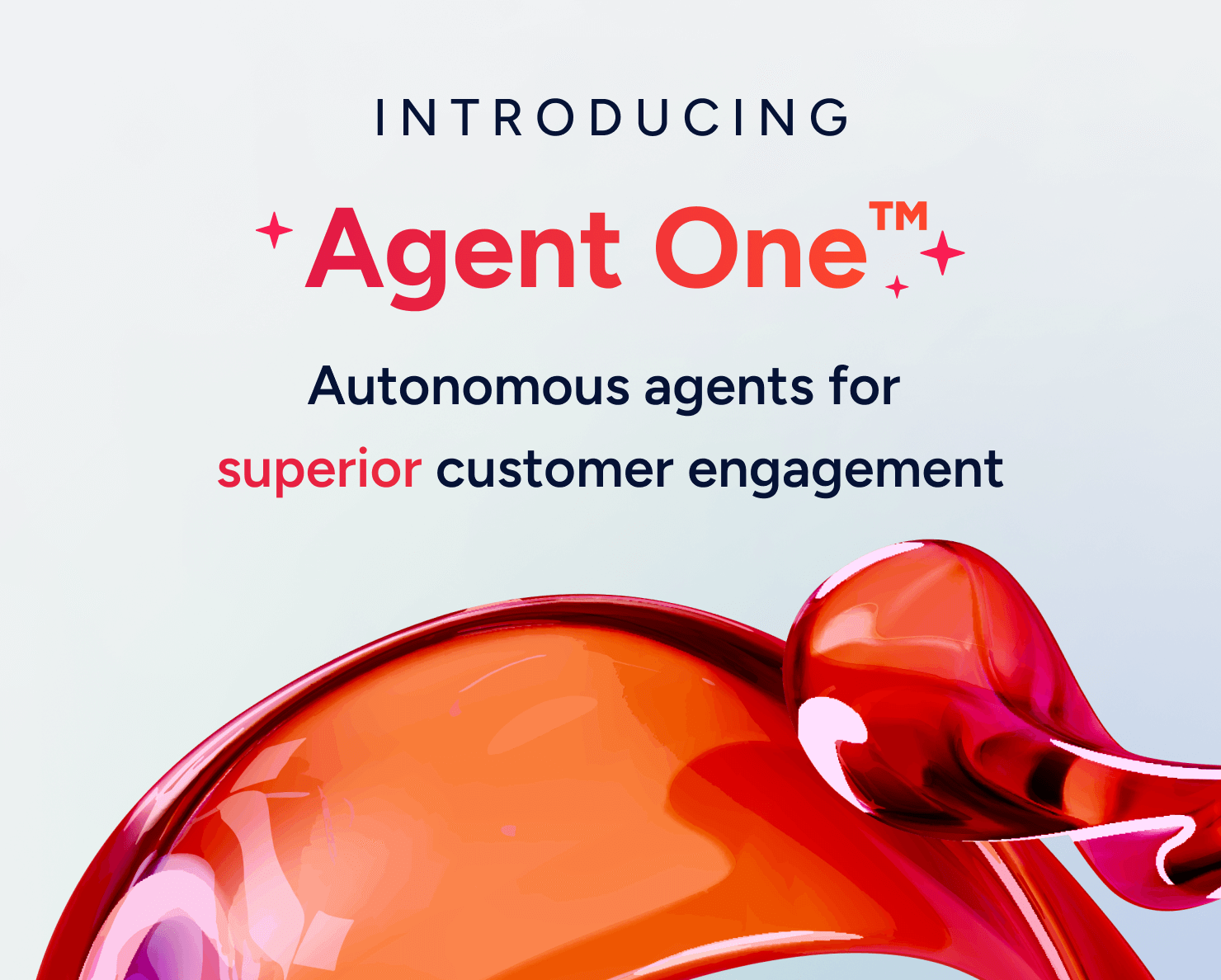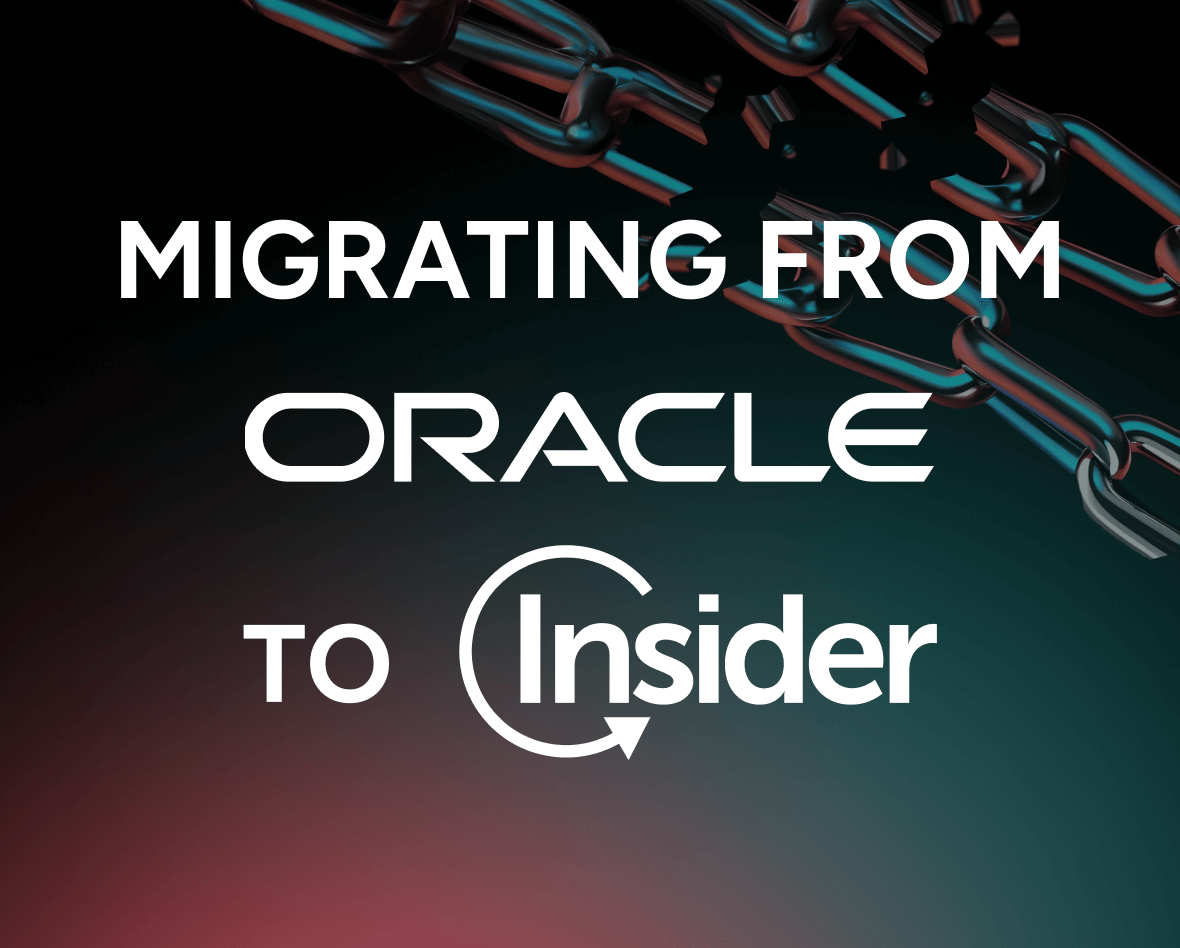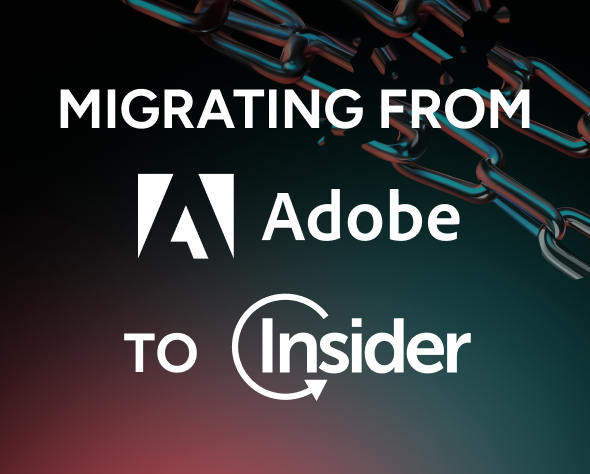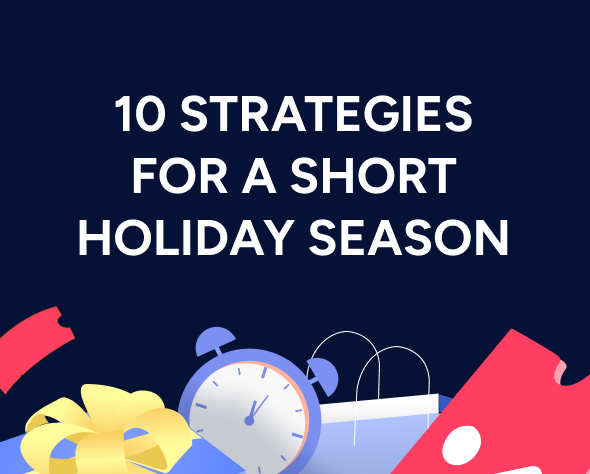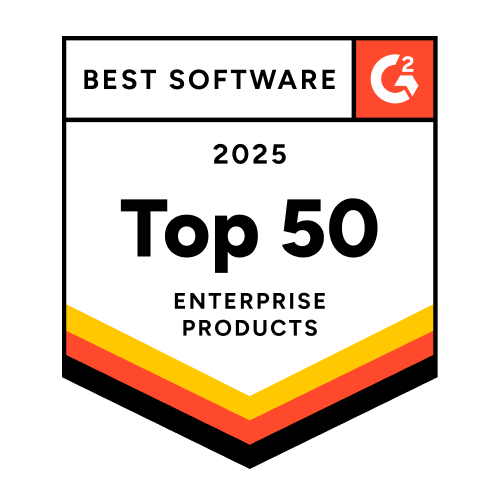Marketing Technology Migration – The Ultimate Guide
Considering a MarTech migration? We’ve compiled the ultimate guide for marketers looking to migrate from one vendor to another. This guide will cover how to find the best provider for your brand, ensure a smooth transition with no downtime or delay, and ensure your team is enabled and up and running fast.
Updated on 30 Sep 2025
The prospect of migrating to a new marketing technology platform can feel daunting—not to mention the personal risk involved. But, if you’re not getting what you need from your existing vendor—whether that’s because you need access to better capabilities and support, want to consolidate your tech stack, or drive more ROI and revenue—it’s probably time to think about switching. The thought of this, though, is likely making you feel overwhelmed.
You’re not alone.
Our ultimate guide is here to cut through the noise and help you confidently migrate from one vendor to another. We’ll show you how to find the perfect provider for your brand, breeze through the transition with zero downtime, and get your team running at full speed—fast.
Switching platforms can seem risky and daunting, but if your current vendor isn’t delivering—whether you’re craving better capabilities, aiming to simplify your tech stack, or needing to boost ROI—it’s time to make a change.
The truth is that marketing migration challenges often keep marketers stuck with outdated solutions that no longer serve them. In fact, fewer than 4 in 10 marketers have navigated a full tech transition before. At Insider, we’re on a mission to help brands break free from clunky, multi-point solutions and migrate marketing solutions as painlessly as possible.
If your current platform feels sluggish, outdated, or isn’t cutting it anymore, consider this your sign: martech migration isn’t inevitable—it’s a crucial part of staying competitive.
The good news is that re-platforming doesn’t have to be stressful. With the right partner, the whole experience can be quick and easy. We’re talking minimal effort, zero downtime, and the quickest time to value. Yes, we’re serious. This is migration as it should be.
“At Insider, we believe migration shouldn’t feel like a leap into the unknown. We’ve redefined the migration process to be as it should be – fast, frictionless, and focused on immediate results. Our goal is simple: to empower brands to break free from outdated solutions and unlock their full potential with zero downtime and maximum impact.” — Serhat Soyuerel, Co-Founder and CRO of Insider
Thinking about making the move? You’re in the right place. This guide will walk you through everything—from selecting the best new provider to executing a flawless transition. Plus, we’ve included a list of must-ask questions for your new vendor—no email required. (Want to skip straight to the template? Click here.) Let’s dive in!

Reasons to consider a marketing technology migration
Our research reveals that brands considering a migration typically list the following as their top reasons:
- Improving efficiency and productivity (67%)
- Reducing the total cost of technology ownership (52%)
- Staying competitive in the marketplace (48%)
With so much on the line, don’t let the fear of migration hold your team back.
Based on feedback from brands that have already made the switch to Insider, here are the most common reasons why more brands are looking to migrate:
You want access to the latest technology and capabilities
70% of the software used by Fortune 5000 companies was developed more than 20 years ago.
While many businesses continue to rely on these legacy systems due to concerns about cost, time, and risks such as data loss or downtime, sticking with outdated technology can seriously impact your marketing team’s performance.
Marketers have enough to worry about, without concerning themselves if their solution provider is at the cutting edge of what is technologically possible. From managing budgets, coming up with new campaigns, reporting to senior management, and thinking of how to contribute more to growth – the innovative roadmap of your technology vendor should not be a concern – it should be a given.
The last thing they should worry about is whether their tools are keeping pace with the demands of modern marketing.
Innovation shouldn’t be an added concern when selecting a solution provider; it should be a given.
You need a partner with a proven track record and a clear roadmap for the future.
Insider is a great example of a forward-thinking platform.
Gerry Murray, Research Director of Marketing and Sales Technology at IDC, remarked, “The big names in the market no longer hold a decisive technological advantage. Platforms like Insider are either at or above technical parity with conventional solutions, proving that the group of disruptors is now competing toe-to-toe with traditional players.”
We’ve achieved the top score of 98/100 for our visionary product roadmap, with G2 users expressing confidence that our product development is on the right track. Additionally, we’ve earned a perfect satisfaction rating of 100/100, with over 96% of our users willing to recommend our platform to others.

We were impressed with Insider’s commitment to innovation. Moreover, its global footprint allows us to have a consistent experience globally. Insider’s product suite is robust.
”Director
–Global Marketing Office at Samsung
You want to increase productivity and efficiency
Technology is essential for delivering outstanding customer experiences. Therefore, your marketing platform should be designed to boost efficiency and productivity, not hinder it.
When selecting a vendor, prioritize those who have a strong background in AI and the scalability to grow with your business needs.
By leveraging the combined power of generative, predictive, and conversational AI, you can uncover new revenue opportunities and significantly scale your marketing efforts.
Some popular use cases include:
- Automate Routine Tasks: Streamline processes that typically consume 60% of a marketer’s time. This way, your team can focus on more strategic initiatives.
- Create Marketing Campaigns and Content: Create segments, customer journeys, and content—eliminating the traditional trial-and-error phase.
- Optimize Customer Journeys: Design cross-channel customer journeys with the highest probability of success. Additionally, eliminate the need for complex copywriting—AI can craft compelling email subject lines and engaging content from simple input. Sirius AI™ automatically tailors messages to each channel and desired outcome.
Take Insider, for example.
Our groundbreaking updates in Sirius AI™, the world’s most comprehensive AI solution for Customer Experience and Marketing, empower brands to achieve higher productivity while driving increased revenue and ROI.

For many brands, achieving true personalization – a totally unique experience per person – remains a challenge. This is largely caused by unmanageable workloads and the amount of manual effort required to execute customer journeys. That’s why we developed Sirius AI™, to alleviate marketers of these challenges at every level of customer journey creation.
”Hande Cilingir
–Co-Founder and CEO at Insider
You need to maximize cost efficiency and demonstrate ROI
Over time, brands that rely on outdated technologies risk accumulating tech debt, significantly hindering their marketing operations. However, the challenge isn’t just about eliminating tech debt or cutting costs tied to outdated or redundant technologies.
Marketing leaders are constantly pressured to drive growth, with revenue growth often cited as the #1 priority.
This means marketing leaders must choose vendors with a solid track record of delivering the specific growth their company needs. Many tech platforms fail to meet expectations because of a fundamental mismatch between a brand’s growth goals and the platform’s capabilities.
For instance, if your objective is to increase revenue and profitability, focusing solely on new customer acquisition might not be the best strategy. Our research shows that a 5% increase in customer retention can boost profits by up to 75%, as existing customers are 50% more likely to try new products and spend 31% more on average than new customers.
In this scenario, the marketer should seek a solution provider with expertise in enhancing customer lifetime value, repeat purchase rate, and long-term engagement. At Insider, we help brands see results faster—on average, 3X quicker —than other solutions, according to independent user reviews on G2. By streamlining your tech stack and eliminating unnecessary vendors, you’ll not only save money but also accelerate your marketing performance.

Insider is a leader in non-traditional channel marketing which offers us new ways to engage with our customers across all channels. Instead of rigid calendar-based campaigns, our experiences are now as unique as our customers. Since partnering with Insider, NA-KD’s CLTV increased by 25% and we achieved 72X ROI in just 12 months.
”Head of CRM
–NA-KD
Customer support is slow and unreliable
Lack of customer support is frequently cited as one of the main barriers to a brand’s success in realizing the value of its martech investments.
7 out of 10 customers said they’d stop doing business with a company due to a poor experience. Conversely, 91% of customers say they’re more likely to make another purchase after a great customer service experience.
If your current vendor isn’t meeting your expectations, it’s time to evaluate your options.
When migrating to a new solution, remember that you’re not just choosing a platform—you’re also investing in the team that supports it. The quality of service from engineers, account managers, and customer support is just as important as the platform’s features.
No matter how advanced a platform is, its effectiveness is directly tied to the team backing it.
Poor customer support is one of the most common barriers brands face when trying to maximize the value of their martech investments. That’s why it’s important to have a responsive and knowledgeable support team in place to help you get the most out of your technology.
Insider provides 24/7/365 around-the-clock support and has a presence in 20+ countries. Our account management and customer support set-up ensures you get access to local experts with global expertise.
Our team is always available to offer guidance during implementation and beyond.

We met with a lot of different companies before working with Insider, but no support team came close. Insider’s support team is attentive, has global experience and also local expertise, which is exactly what we needed. In addition to this, the technology is easy to use and integrate, and meets all of our needs. We can say that Insider won our heart as the best platform with the most amazing team. 80% of my work is with Insider’s email solution.
”Marketing Director
–Telecom Industry
IT dependency is slowing you down
Marketers shouldn’t have to depend on IT or development teams to launch campaigns or test and optimize. These departments have their own priorities, which can delay your marketing efforts.
For instance, a marketer should be able to set up a campaign segment without relying on an IT resource to pull data for them. Suppose your campaigns hinge on Jira tickets with IT. In that case, you’re probably not moving fast enough to keep up with your audience needs and you’re spending a lot of unnecessary time in operational bottlenecks.
Your marketing platform should empower your team to take control of your campaigns, which can further reduce the need for constant technical assistance.
Insider was built with this exact need in mind. Our platform operates on a unified data layer that combines user-friendliness with the flexibility to meet the needs of businesses of all sizes.
With drag-and-drop editors and a vast library of customizable templates designed for different industries, goals, and use cases, Insider makes campaign creation and management a breeze.
We’re also dedicated to helping you succeed independently.
Through Insider Academy and our comprehensive help resources, you’ll gain the tools and knowledge to maximize the platform’s potential without relying on IT teams.
You’re juggling too many systems
Today, enterprises use an average of 91 cloud-based marketing services.
The result? Confusion and inefficiency.
In fact, over one-third (35%) of marketers use multiple technologies that don’t integrate well.
This leads to more vendors to manage, a growing number of budget line items, increased confusion, and higher waste.
You’re not alone if your martech stack feels overwhelming and you struggle to simplify it. Many face the same challenge and seek solutions to make their systems more manageable and effective.
For many of our customers, the greatest value of working with Insider lies in our ability to simplify and consolidate their marketing efforts.
This has an impact on customer experience, too. Many brands struggle to personalize their communications because their customer data is stuck in silos—scattered across emails, CRMs, and various point solutions.
Insider solves this by facilitating a seamless data migration process, collecting all relevant customer data from across your enterprise and bringing it together in one unified platform.
This allows you to finally use that data to its full potential and create truly personalized marketing experiences.

Insider’s Customer Data Platform (CDP) is also the best in the business as it is able to capture siloed user data from these different channels and bring them to one central location for us to draw insights and act on it to create engaging personalized cross-channel experiences.
”Coco L
–Marketing Consultant
For companies like rapidly growing European fashion brand NA-KD, consolidating their disjointed tech stack into Insider’s unified platform provided them with a 360-degree view of every customer.
The result?
A 25% uplift in customer lifetime value (CLTV) and a 72x return on investment within just 12 months.
How to avoid common mistakes and have a successful migration
Even with the most careful planning, effective communication, and thorough testing, marketers can face challenges during the migration process, usually caused by their technology provider.
These include:
- Lack of proper support: Many SaaS providers fail to offer the necessary guidance and resources during a migration, leaving your team to figure out complex systems independently. Without adequate support, even small issues can turn into major disruptions, which can bring down the entire process, leading to costly downtime.
- Inadequate data handling: Data migration from one system to another is tricky, and when your provider doesn’t handle this properly, it can result in data loss, corruption, or incomplete transfers. This not only delays your marketing efforts but can also harm customer relationships if vital information is lost or compromised.
- Integration failures: One of the biggest pain points during migration is ensuring that the new platform integrates seamlessly with your existing tools and systems. Otherwise, it can lead to system breakdowns, data silos, and additional manual work for your team.
- Overpromising and underdelivering: Some providers may promise an easy, fast migration but fail to deliver on that promise. This can result in extended timelines, unexpected costs, and a frustrating experience for your team, ultimately leaving you with a system that isn’t fully functional or properly aligned with your needs.
- Unexpected disruptions: Even with careful planning, there’s always the risk of unplanned disruptions during migration. These could range from downtime during peak hours to operational delays that impact customer engagement. Providers that don’t take the time to properly assess your unique needs often overlook these risks, leaving you to deal with the fallout.
To avoid these common mistakes, choose a partner that offers full support throughout the migration process, from initial planning to post-migration troubleshooting.
Insider’s migration commitment promises marketers confidence, simplicity, and assurance at every level.
See why top brands trust Insider — try our product tours at your own pace.
However, at the same time, it’s important to prepare internally for the migration. Here’s how:
1. Establish the team and stakeholders
Assemble a dedicated migration team with clear project owners for each department—whether it’s IT, security, CRM, or marketing.
Each project owner should be accountable for their team’s specific responsibilities during the migration and ensure tasks are completed smoothly and on schedule.
For example:
- IT: The IT project owner will manage the technical aspects. Like system integrations, data migration, and minimizing downtime.
- Security: The security lead will be in charge of data protection. He/she will make sure that compliance is maintained and safeguard against vulnerabilities during the migration.
- CRM: The CRM project owner will handle customer data migration. He/she will make sure all profiles, segmentations, and histories are transferred accurately. They’ll also be responsible for all data migration project steps and data migration project tasks.
- Marketing: The marketing owner will ensure that campaigns, assets, and workflows move smoothly to the new platform without disrupting ongoing efforts.
Also, escalation points should be established within each team. These are designated contacts who will quickly respond to any issues that arise during the migration process.
Should any challenges emerge—whether technical, security-related, or data-specific—the escalation points will step in to resolve the issues promptly. Helping you prevent delays and disruptions.
2. Set goals and priorities
Establishing clear goals at the start will guide your migration process and keep your team focused on what truly matters.
To define these goals, ask yourself targeted questions that directly relate to the migration:
- What do we need to achieve with this migration?
(e.g., Minimize downtime, improve system performance, enhance security, streamline workflows.) - Which areas of our current system are causing the most pain?
(e.g., Slow response times, frequent outages, lack of integration, poor user experience.) - What key business functions must be up and running immediately post-migration?
(e.g., Customer service, order processing, data analysis.) - What KPIs and metrics will define success?
(e.g., Less than one hour of downtime, zero data loss, improved system speed, higher user satisfaction.) - Which specific campaigns and programs do you need to execute and in what timeframe as part of migration (such as onboarding, abandoned cart recovery, or year-in-review messages) and are essential for you to execute successfully to meet your business objectives?
- What is your target budget for a new platform?
Once you’ve defined your goals, prioritize the data migration project steps based on the impact they have on your business operations.
This will help you avoid unnecessary delays, prevent disruptions, and make sure that critical systems are running smoothly throughout the transition.
For example, if customer service is a key business function that must remain operational, prioritize migrating your CRM and helpdesk software first. This can help you make sure that your customer support team can continue to assist clients without interruption.
Once the critical systems are stable, you can shift your focus to migrating other important functions like data analysis.
3. Conduct a full data audit
Migrating user data and preferences between platforms is one of the most challenging aspects of any migration. And it’s often where things can go wrong.
Some common issues include data loss, corruption, or mismatched values.
To avoid this, begin by conducting a full data audit.
Review all data fields, including unique identifiers, customer profiles, and transaction histories. Determine what data is essential to transfer.
For example, if you’re migrating from one eCommerce CDP to another, you’ll need to transfer customer contact information, purchase history, and any loyalty points they’ve earned. You should also account for specific preferences, such as saved payment methods and shipping addresses.
Work with your provider to map every data field from your old platform to your new system. This will help you make sure that each piece of information lands in the correct place.
Also, establish a plan for handling discrepancies. If certain data types are incompatible between platforms, consider how to clean, transform, or remove that data. Create detailed migration rules for such cases.
Once the mapping is complete, test the migration on a small data sample. This can help you catch any issues early and avoid potential data corruption when moving larger datasets.
Finally, a rollback plan should be established if something goes wrong during the migration. It’s better to pause and fix an issue than to complete a faulty migration that could lead to long-term data problems.
4. Test integrations
Another important aspect of any migration is to make sure that all tools and integrations work seamlessly with the new platform.
This process begins by documenting every API (Application Programming Interface) and SDK (Software Development Kit) that is used in the current system.
Create a complete inventory of all integrations, including third-party services like payment gateways, CRM systems, or analytics platforms.
You’ll also want to verify how these tools integrate with the new solution. Pay close attention to compatibility issues or any potential gaps in functionality.
We recommend defining typical use cases to ensure that the new platform can ingest and process the data at the required scale and speed.
For example, if your current system handles thousands of real-time transactions per minute, the new platform should be able to match or exceed this performance. This is especially important for preventing bottlenecks and avoiding the creation of data silos, which can hinder overall efficiency and collaboration.
Testing these integrations thoroughly before the full migration will help you identify any issues early.
Simulate real-world use cases to see how the new platform handles them under pressure. This step ensures smooth operations once the migration is complete and reduces the risk of major disruptions during or after the transition.
5. Transfer critical templates
Another top priority when migrating to a new platform is transferring highly critical templates and campaigns to ensure zero downtime or operational issues. These components are often the backbone of customer interactions, and any disruption can lead to a poor user experience or even lost revenue.
Start by identifying the most essential templates and campaigns, such as those used for new customer registrations, order confirmations, or password resets. These are the types of communications that customers expect to receive instantly and without fail.
To ensure a smooth transition, these templates should be the first to migrate. Carefully test them in the new environment to make sure they function correctly. This includes verifying that all dynamic content, such as personalized greetings or order details, displays as expected.
For ongoing campaigns, especially those that are time-sensitive, plan the migration during a low-traffic period to minimize potential disruptions. It’s also a good idea to set up parallel testing—running the campaign on both the old and new platforms simultaneously. This allows you to compare performance and catch any issues before fully switching over.
Lastly, a monitoring system should be established to track the performance of these critical campaigns post-migration. This ensures that any problems can be quickly identified and resolved, keeping your operations running smoothly and your customers satisfied.
6. Test everything
Don’t leave anything to chance—test every use case, integration, and campaign to make sure everything is functioning as it should.
This is your opportunity to spot any issues early on so that when you go live, everything runs smoothly.
Navigating a cross-channel martech migration doesn’t have to be overwhelming. With the right strategy and partner, you can transition seamlessly, avoid the common pitfalls, and unlock the full potential of your new platform. Remember, the goal isn’t just to switch vendors but to elevate your marketing capabilities and drive better results. Ready to get started? We’re here to help at Insider. Get a demo and save a copy of our RFP template to take the first steps toward a smoother, more effective martech migration. We’d love to guide you on your journey to better cross-channel marketing!

